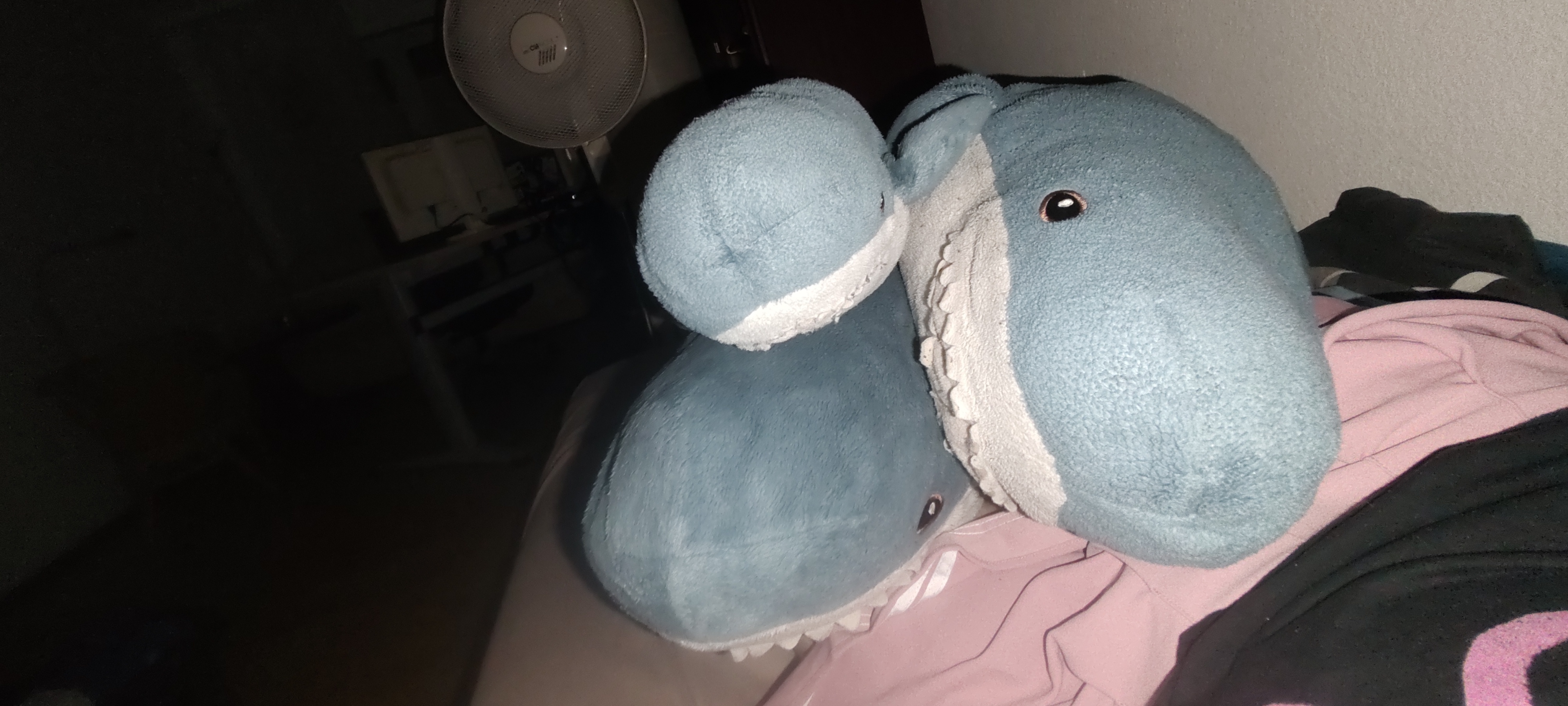Has my motd gone too far? It loads a random ANSI catgirl from a folder. I use arch btw, server runs minimized Ubuntu Server.
Catgirls aren’t cringe, but ubuntu is.
Nah, I don’t think so. I mean, sure, arch is a little cringe, but it’s not that bad. Cool terminal, btw.
It would be cringe if you were using a shared server and set this as a default for everyone or if it was interfering with something. But if you’re just minding your own business I could not care less what customisations you put on your terminal as long as it isn’t using excessive resources
The real cringe is using passwords instead of keys to login.
That is a fat L
You could double the vertical resolution by using half-height blocks (
U+2584) and using the background color for the upper half.Thanks for the suggestion, gonna look into this. I didn’t want to use real images even though kitty supports them because I like the retro look and wanted it terminal agnostic for when I use termux on my phone.
I gladly present you this jank.
You might need these to compile:
cargo add image cargo add clap --features deriveAnd the jank itself:
Some Rust code
use std::path::PathBuf; use clap::Parser; use image::{ imageops::{self, FilterType}, ImageReader }; #[derive(Parser)] struct Cli { path: PathBuf, #[arg(short = 'H', long, default_value_t = 30)] height: u32, #[arg(short, long, default_value_t = 0.4)] ratio: f32, #[arg(short, long, default_value_t, value_enum)] filter: Filter, } #[derive(clap::ValueEnum, Clone, Default)] enum Filter { Nearest, Triangle, Gaussian, CatmullRom, #[default] Lanczos3, } fn main() -> Result<(), Box<dyn std::error::Error>> { let args = Cli::parse(); let filter = match args.filter { Filter::Nearest => { FilterType::Nearest }, Filter::Triangle => { FilterType::Triangle }, Filter::CatmullRom => { FilterType::CatmullRom }, Filter::Gaussian => { FilterType::Gaussian }, Filter::Lanczos3 => { FilterType::Lanczos3 }, }; let img = ImageReader::open(args.path)?.decode()?; let original_ratio = img.width() as f32 / img.height() as f32; let width = ( args.height as f32 / args.ratio ) * original_ratio; let out = imageops::resize(&img, width as u32, args.height * 2, filter); let mut iter = out.enumerate_rows(); while let Some((_, top)) = iter.next() { let (_, bottom) = iter.next().unwrap(); top.zip(bottom) .for_each(|((_, _, t), (_, _, b))| { print!("\x1B[38;2;{};{};{};48;2;{};{};{}m\u{2584}", b[0], b[1], b[2], t[0], t[1], t[2]) }); println!("\x1B[0m"); } Ok(()) }I’ve been learning Rust by going through The Book… there’s some wack-ass syntax in that language. I’ve mostly used C# and Python so most of it just looks weird… I can more or less understand what
while let Some((_, top)) = iter.next() { ... }is doing, but.for_each(|((_, _, t), (_, _, b))| { ... }just looks like an abomination. And I mean the syntax in general, not this code in particular..for_each(|((_, _, t), (_, _, b))| { ... }This is actually fairly similar to what C# has.
This is a closure syntax:
| arguments | { calls }In C#, the closest is lambda expressions, declared like this:
( arguments ) => { calls }Parentheses are tuple deconstructors. In C# you have exactly the same thing. Imagine you have a method that returns a two element tuple. If you do this:
var (one, two) = MethodThatReturnsATuple();You’ll get your tuple broken down automatically and variables
oneandtwodeclared for you.First of all, I’m using
.zip()to pair the rows of the picture by two, that returns a tuple, so, I have to deconstruct that. That’s what the outer parentheses are for. The pixel enumeration stuff I’m using returns a tuple(u32, u32, &Rgba<u8>)first two values are x and y of the pixel, the third one is a reference to a structure with color data. I deconstruct those and just discard the position of the pixel, you do that with an underscore, same as C#.I’m not that far into learning myself, but I’m not a textbook learner at all. Poking around opensource projects and wrestling with the compiler prooved to educate me a lot more.
but .for_each(|((_, , t), (, _, b))| { … } just looks like an abomination
It’s not so different in python:
for ((_, _, t), (_, _, b)) in zip(top, bottom):Or in C#:
.ForEach(((_, _, t), (_, _, b)) => Console.Write(...));Is
| (...) | { ... }a lambda expression then?Yep, lambda or closure (it’s an anonymous function but it can also capture state from the enclosing function, i think pure lambdas can’t do that?)
It’s beautiful! I actually adjusted my python code to your method and just for optimization checked if the current two pixel colors match the previous two and if so leave out the color info. Much more fidelity in the images now!
Or using sixels. For example foot supports them, and you can display one with chafa.
Never too far, also can you share how you did that?
/etc/update-motd.d/01-random-art don’t forget to chmod +x it and put ‘art’ in /usr/share/motd-art. MOTDs are limited to 80 characters wide, so don’t over do it. I made image_to_ansi.py to resize and convert the images.
I can’t hate on ANSI art even if I’m not in to what the art is of. 🤷

deleted by creator
Okaerinasaimase, goshujinsama
Needs more pixels. You use Kitty, try something like https://github.com/hpjansson/chafa to render a proper picture?
I considered using kitty’s built-in ssh kitten to display real images, but I ended up liking the retro look more.
How??? Asking for a friend…
deleted by creator
I thought motd could not be scripted hmmm…
Never tried it, and IIRC, motd is just a text file - but does that stop you from running a systemd timer to update it every few minutes? Or, if it’s your own server and there’s only a single user (logging in), put a script in your profile that changes the motd for the next login?
For multiple users: /etc/profile or /etc/bash.bashrc
/etc/motd no, but it runs the scripts in /etc/update-motd.d/
Some shells (e.g.
fish) allow you to easily customize this.










